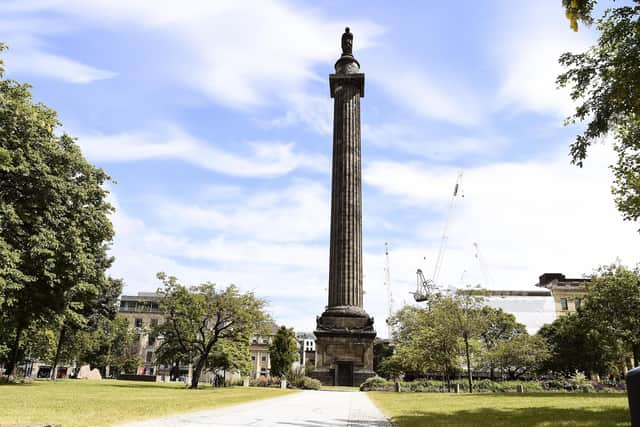World Heritage Site watchdog urges Edinburgh to keep slavery-link statues in place
Edinburgh World Heritage (EWH) has urged the city council, which ordered a city-wide review of its collection in response to the Black Lives Matter (BLM) movement, to "preserve the valued historic fabric of the city".
The organisation’s response to an official consultation on how the city should respond to “historic racial injustice” is expected to increase pressure on the council to preserve some of its most controversial sculptures and monuments.
Advertisement
Hide AdAdvertisement
Hide AdThe trust, funded by the council and government agency Historic Environment Scotland, wants the city to challenge "historic racial prejudice" through "new understanding, interpretation and education" over long-standing statues, monuments and landmarks.
It has also said “acknowledging and representing Edinburgh’s historical relationship with slavery and colonialism is important, and long overdue".
However, the body stressed the need for the review to be “evidence-based, balanced, and informed by the views of a diverse range of stakeholders, particularly those of under-represented communities”.
Controversy has surrounded the review since it was instigated by the council in the aftermath of BLM protests in the city, including at the foot of the Melville Monument, erected in honour of Henry Dundas, one of Britain’s most powerful 18th-century politicians.
Many historians say he played a key role in delaying the abolition of the Atlantic slave trade while he was home secretary, and has been blamed for an additional 630,000 people being transported from Africa to British colonies in the West Indies.
However, some experts believe he has been misrepresented, pointing to how he acted in court for Joseph Knight, a slave taken from Jamaica to Scotland, in a landmark case that led to the end of legal slavery in Scotland.
EWH’s website states the figure the Melville Monument commemorates is “largely forgotten”.
Advertisement
Hide AdAdvertisement
Hide AdThe body states: “Instead people appreciate it as another part of the city’s extraordinary architectural heritage, an impressive backdrop to our daily lives.”Other statues linked to slavery and colonialism by the review panel include William Pitt the Younger, on George Street, David Livingstone, in Princes Street Gardens, General John Hoped in St Andrew Square and David Hume on the Royal Mile.


Edinburgh World Heritage director Christina Sinclair said: “Our professional view is that buildings, streets and statues associated with slavery and colonialism are conserved and actively used as tools for education, dialogue and understanding.
“There are many ways to do this, and each case merits a bespoke approach sensitive to the heritage values, and the subject matter, through an inclusive process. For example, we have held free, public lectures exploring the topic, and have been running a series of workshops with young women of colour.
“Adding interpretation, new public art and a creative response can work alongside conservation to stimulate important dialogue about our past and present, and this is something we are progressing with city partners. New public art, particularly, is a valuable way of acknowledging and recording Edinburgh’s relationship with slavery and colonialism, while also enhancing the public realm.
“It’s important to recognise that Edinburgh’s historical relationship with slavery and colonialism isn’t just restricted to a particular number of statues, buildings and street names. It’s deeply interwoven into the city’s fabric.”

